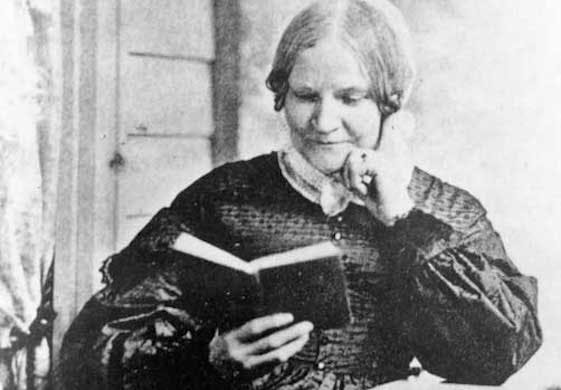Driving a Wedge Into the Color Line
Contemporary biography is trying to break down the color line into individuals and families, and to show the intricate connections between Americans of all colors.

‘The Grimkes: The Legacy of Slavery in an American Family’
By Kerri K. Greenidge
Liveright 432 pages
‘Lydia Maria Child: A Radical American Life’
By Lydia Moland
University of Chicago Press, 560 pages
‘Madwoman’
By Louise Treger
Bloomsbury, 304 pages
It seems that almost every day a new story emerges about the consanguinity of Black and white American lives, and yet, given the remaining deep racial divisions, even Black and white members of the same family can look upon one another with surprise. The color line, as it began to be called in the 1860s, still rules.
Contemporary biography is trying to wedge its way into the history of the color line by breaking it down into individuals and families, and by showing the intricate connections between Americans of all colors that not even legendary abolitionists like the Grimke sisters, Sarah and Angelina, could fully acknowledge in spite of renouncing their privileged Southern plantation lives.
Kerri K. Greenidge’s book begins with a Cast of Characters that shows the complicated genealogy of a family on both sides of the color line, including African American anti-slavery activists and generations of Grimke slaveholders. Unlike similar sections in biographies, this one should really be called a Caste of Characters, since the Black and white family members form a segregated society.
Ms. Greenidge relentlessly pursues the history of the entire family between the 18th and the 20th centuries, with the Grimkes standing in for the story of how this country’s heritage is only now being integrated into biographical narratives that are slowly eroding the color line the Grimke sisters, for all their progressivism, would not erase.
More than 80 years ago, in Faulkner’s “Absalom, Absalom,” it took a white Canadian, Shreve McCannon, to apply a sort of shock therapy to Southerner Quentin Compson’s brooding over yet another story of Black and white bonding, and to the obsession with race that has riven American history: “in a few thousand years, I who regard you will also have sprung from the loins of African kings.”
The repair work that biography has brought to an occluded American history began with Fawn Brodie’s re-examination of the Thomas Jefferson-Sally Hemings liaison in “Thomas Jefferson: An Intimate History” (1974) and continued in Annette Gordon Reed’s “Thomas Jefferson and Sally Hemings: An American Controversy” (1998) and “The Hemingses of Monticello: An American Family” (2009).
It seems that history can be changed only on a case-by-case basis, as in the biography of Lydia Maria Child, a best-selling author of self-help guides and childrens’ stories who in 1833 produced the first full-length anti-slavery book, drawing many recruits to the abolitionist cause and alienating readers of her popular publications.
Quite aside from the slavery issue, and even Child’s personal struggles, are the biographer’s pinpointing of what it would mean now for you to change the course of your life: “Living by her conscience made her a radical, unwilling to accept the conventional wisdom of her time and unable to abide by its norms. She had aborted a fledgling career as one of America’s first female novelists. She had consigned herself to a life of poverty. She had lost friends and alienated family.”
In short, Child was willing to go it alone in ways that make even the brave Grimke sisters seem timid. Louisa Treger’s biographical novel about Nelly Bly (1864-1922), another loner, is headed with an epigraph quoting an Emily Dickinson poem: “Much madness is divinest sense / To a discerning eye; / Much sense the starkest madness. / ’T is the majority / In this, as all, prevails. / Assent, and you are sane; / Demur, — you’re straightway dangerous, /And handled with a chain.”
Bly was not an anti-slavery activist but an investigative reporter who exposed the use of asylums to punish and marginalize women. Slavery takes all sorts of forms, which is why its legacy will always be with us and why its history has to be taught generation after generation. There is no getting over slavery, no progress without reckoning with it, as biographers and biographical novelists keep telling us.
Mr. Rollyson is the co-author with Lisa Paddock of “Emily Dickinson: Discipline in the Service of Art” and “Thurgood Marshall: Perseverance for Justice.”

